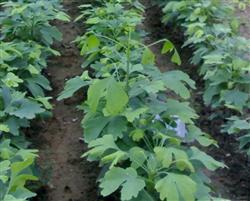Control of mushroom brown spot

Mushroom brown spot, also known as dry bubble disease, often occurs on the mushroom bed and does great harm. First, when the symptoms come on, brown spots are formed on stalks, umbrellas and pleats, and depressions appear, and mushrooms lose their toughness, and when they are serious, mushrooms will rot. The shape of young mushroom is changeable, the edge of umbrella is serrated, or the stalk is curved, some are shaped like garlic, and the stalk is thicker than the cap. When the disease occurs on the mushroom, it often produces local brown spots, and the diseased mushroom becomes dry and leathery in the later stage, and the gray mildew layer is produced in the diseased site. Brown spot disease differs from white rot in that diseased mushrooms rot more slowly, without brown mucus and without stench. In the early stage, the symptoms of white rot are similar to those of brown spot. Second, the primary infection source of the disease usually comes from the covering soil. The bacterial spores on infected mushrooms spread with airflow and can also be transmitted by hand and tool contact with diseased mushrooms during manual operation. The disease is generally infected from the broken stalk and then spreads. Third, the occurrence degree of the disease is closely related to the temperature and humidity. Factors such as high temperature of mushroom bed, poor ventilation, humidity, and the accumulation of bacteria-carrying waste on the mushroom bed will lead to the occurrence of diseases.
- Prev

Seedling raising technique of hardwood cutting of Ginkgo biloba
The common seedling raising methods of Ginkgo biloba are sowing, cutting, root tillering and grafting, etc. Cutting seedlings of Ginkgo biloba can not only save seeds and reduce seedling costs, but also speed up seedling breeding and maintain the excellent characteristics of varieties. Hardwood cuttage is a kind of cuttage with more than 1-year-old branches with a high degree of Lignification.
- Next

Master the key technology of Lentinus edodes to make Lentinus edodes produce more mushrooms in spring
The fruiting bodies of Lentinus edodes often appear "candle mushroom" (with stalk but no cover), "pineal mushroom" and "litchi mushroom" in the process of growth. These are abnormal variations of Lentinus edodes and belong to physiological diseases. The prevention and cure method has the following several points: 1, understand the bacteria, prevent the introduction mistake: planting.
Related
- Fuxing push coffee new agricultural production and marketing class: lack of small-scale processing plants
- Jujube rice field leisure farm deep ploughing Yilan for five years to create a space for organic food and play
- Nongyu Farm-A trial of organic papaya for brave women with advanced technology
- Four points for attention in the prevention and control of diseases and insect pests of edible fungi
- How to add nutrient solution to Edible Fungi
- Is there any good way to control edible fungus mites?
- Open Inoculation Technology of Edible Fungi
- Is there any clever way to use fertilizer for edible fungus in winter?
- What agents are used to kill the pathogens of edible fungi in the mushroom shed?
- Rapid drying of Edible Fungi

